�
ALSO
BY
NICHOLAS
CARR
The
Big
Switch:
Rewiring
the
World,
from
Edison
to
Google
Does
IT
Macer?
THE
SHALLOWS
What
the
Internet
Is
Doing
to
Our
Brains
NICHOLAS
CARR
W.
W.
NORTON
&
COMPANY
New
York
*
London
Copyright
©
2010
by
Nicholas
Carr
All
rights
reserved
�
“The
wribng
ball
is
a
thing
like
me…”
from
Gramophone,
Film,
Typewriter
by
Friedrich
A.
Kicler,
translated
by
Geoffrey
Winthrop-‐Young
and
Michael
Wutz.
Copyright
©
1996
by
the
Board
of
Trustees
of
the
Leland
Stanford
Jr.
University
for
translabon;
©
1986
by
Brinkmann
and
Bose.
All
rights
reserved.
Used
with
the
permission
of
Stanford
University
Press,
www.sup.org.
“The
House
Was
Quiet
and
the
World
Was
Calm,”
copyright
1947
by
Wallace
Stevens,
from
The
Collected
Poems
of
Wallace
Stevens
by
Wallace
Stevens.
Used
by
permission
of
Alfred
A.
Knopf,
a
division
of
Random
House,
Inc.
For
informabon
about
permission
to
reproduce
selecbons
from
this
book,
write
to
Permissions,
W.
W.
Norton
&
Company,
Inc.,
500
FiNh
Avenue,
New
York,
NY
10110
Library
of
Congress
Cataloging-‐in-‐Publicabon
Data
Carr,
Nicholas
G.,
1959–
The
shallows:
what
the
Internet
is
doing
to
our
brains/Nicholas
Carr.—1st
ed.
p.
cm.
Includes
bibliographical
references.
ISBN:
978-‐
0-‐393-‐07936-‐4
1.
Neuropsychology.
2.
Internet—Physiological
effect.
3.
Internet—
Psychological
aspects.
I.
Title.
QP360.C3667
2010
612.80285—dc22
2010007639
W.
W.
Norton
&
Company,
Inc.
500
FiNh
Avenue,
New
York,
N.Y.
10110www.wwnorton.com
W.
W.
Norton
&
Company
Ltd.
Castle
House,
75/76
Wells
Street,
London
W1T
3QT
�
to
my
mother
and
in
memory
of
my
father
�
Contents
Prologue
THE
WATCHDOG
AND
THE
THIEF
One
HAL
AND
ME
Two
THE
VITAL
PATHS
a
digression
on
what
the
brain
thinks
about
when
it
thinks
about
itself
Three
TOOLS
OF
THE
MIND
Four
THE
DEEPENING
PAGE
a
digression
on
lee
de
forest
and
his
amazing
audion
Five
A
MEDIUM
OF
THE
MOST
GENERAL
NATURE
Six
THE
VERY
IMAGE
OF
A
BOOK
Seven
�
THE
JUGGLER’S
BRAIN
a
digression
on
the
buoyancy
of
IQ
scores
Eight
THE
CHURCH
OF
GOOGLE
Nine
SEARCH,
MEMORY
a
digression
on
the
wribng
of
this
book
Ten
A
THING
LIKE
ME
Epilogue
HUMAN
ELEMENTS
Notes
Further
Reading
Acknowledgments
And
in
the
midst
of
this
wide
quietness
A
rosy
sanctuary
will
I
dress
With
the
wreath’d
trellis
of
a
working
brain…
—JOHN
KEATS,
“Ode
to
Psyche”
�
THE
SHALLOWS
Prologue
THE
WATCHDOG
AND
THE
THIEF
In
1964,
just
as
the
Beatles
were
launching
their
invasion
of
America’s
airwaves,
Marshall
McLuhan
published
Understanding
Media:
The
Extensions
of
Man
and
transformed
himself
from
an
obscure
academic
into
a
star.
Oracular,
gnomic,
and
mind-‐bending,
the
book
was
a
perfect
product
of
the
sixbes,
that
now-‐distant
decade
of
acid
trips
and
moon
shots,
inner
and
outer
voyaging.
Understanding
Media
was
at
heart
a
prophecy,
and
what
it
prophesied
was
the
dissolubon
of
the
linear
mind.
McLuhan
declared
that
the
“electric
media”
of
the
twenbeth
century—
telephone,
radio,
movies,
television—were
breaking
the
tyranny
of
text
over
our
thoughts
and
senses.
Our
isolated,
fragmented
selves,
locked
for
centuries
in
the
private
reading
of
printed
pages,
were
becoming
whole
again,
merging
into
the
global
equivalent
of
a
tribal
village.
We
were
approaching
“the
technological
simulabon
of
consciousness,
when
the
creabve
process
of
knowing
will
be
collecbvely
and
corporately
extended
to
the
whole
of
human
society.”1
Even
at
the
crest
of
its
fame,
Understanding
Media
was
a
book
more
talked
about
than
read.
Today
it
has
become
a
cultural
relic,
consigned
to
media
studies
courses
in
universibes.
But
McLuhan,
as
much
a
showman
as
a
scholar,
was
a
master
at
turning
phrases,
and
one
of
them,
sprung
from
the
pages
of
the
book,
lives
on
as
a
popular
saying:
“The
medium
is
the
message.”
What’s
been
forgocen
in
our
repebbon
of
this
enigmabc
aphorism
is
that
McLuhan
was
not
just
acknowledging,
and
celebrabng,
the
transformabve
power
of
new
communicabon
technologies.
He
was
also
sounding
a
warning
about
the
threat
the
power
poses—and
the
risk
of
being
oblivious
to
that
threat.
“The
electric
technology
is
within
the
gates,”
he
wrote,
“and
we
are
numb,
deaf,
blind
and
mute
about
its
encounter
with
the
Gutenberg
technology,
on
and
through
which
the
American
way
of
life
was
formed.”2
McLuhan
understood
that
whenever
a
new
medium
comes
along,
people
naturally
get
caught
up
in
the
informabon—the
“content”—it
carries.
They
care
about
the
news
in
the
newspaper,
the
music
on
the
radio,
the
shows
on
the
TV,
the
words
spoken
by
the
person
on
the
far
end
of
the
phone
line.
The
technology
of
the
medium,
however
astonishing
it
may
be,
disappears
behind
whatever
flows
through
it—facts,
entertainment,
instrucbon,
conversabon.
When
people
start
debabng
(as
they
always
do)
whether
the
medium’s
effects
are
good
or
bad,
it’s
the
content
they
wrestle
over.
Enthusiasts
celebrate
it;
skepbcs
decry
it.
The
terms
of
the
argument
�
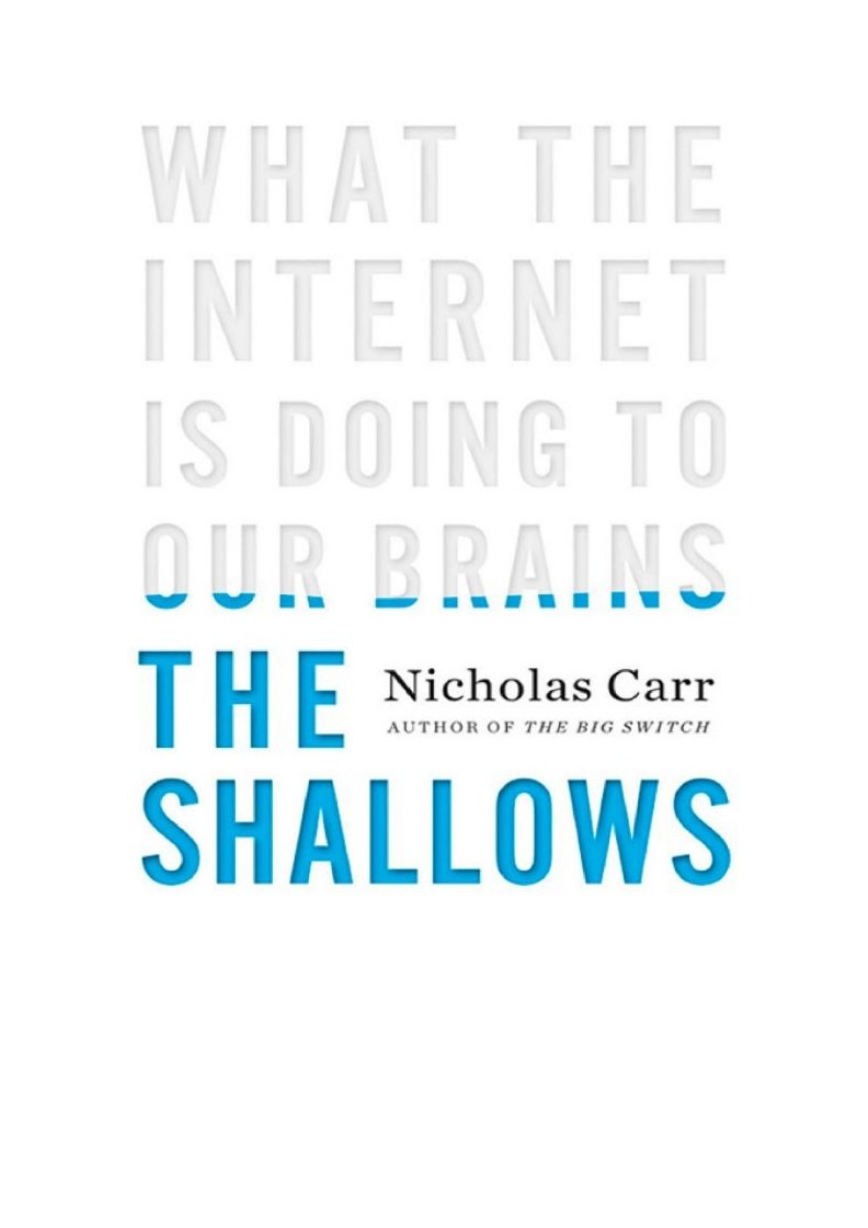
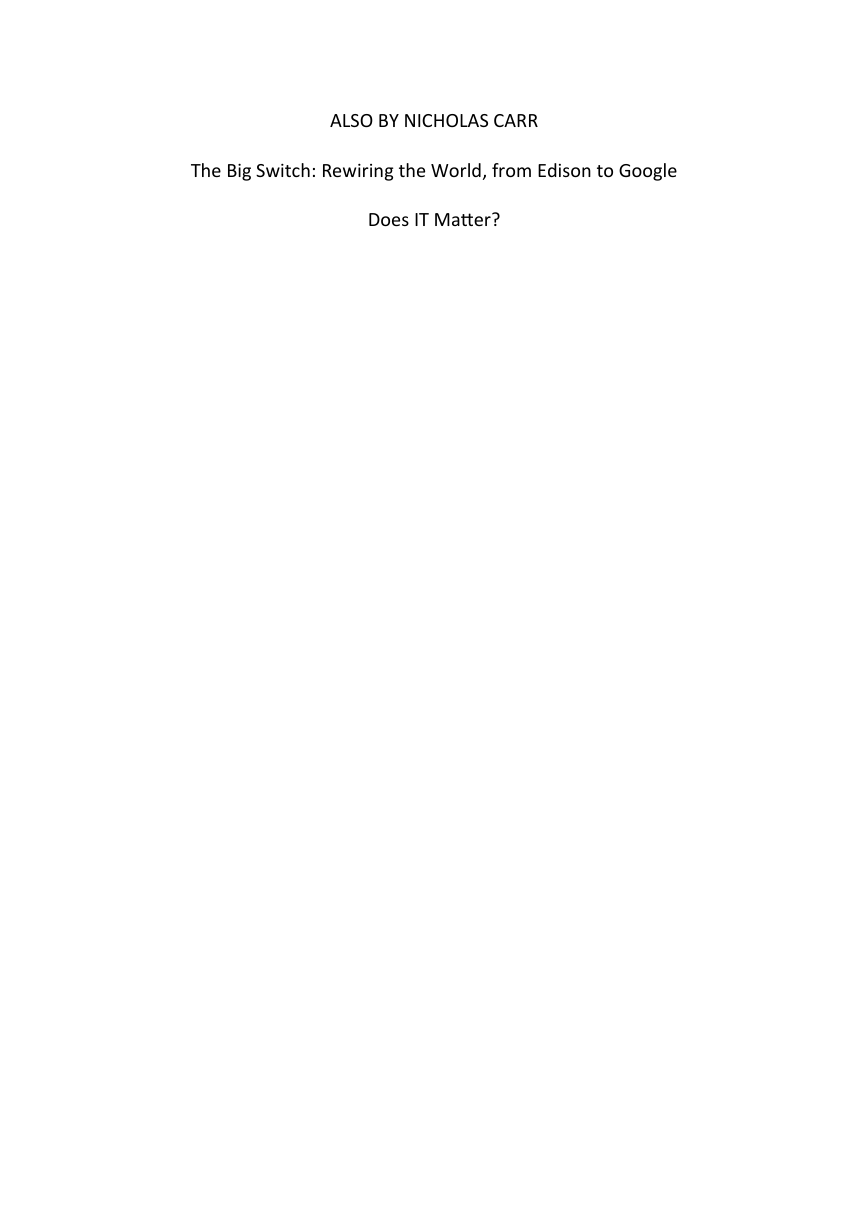
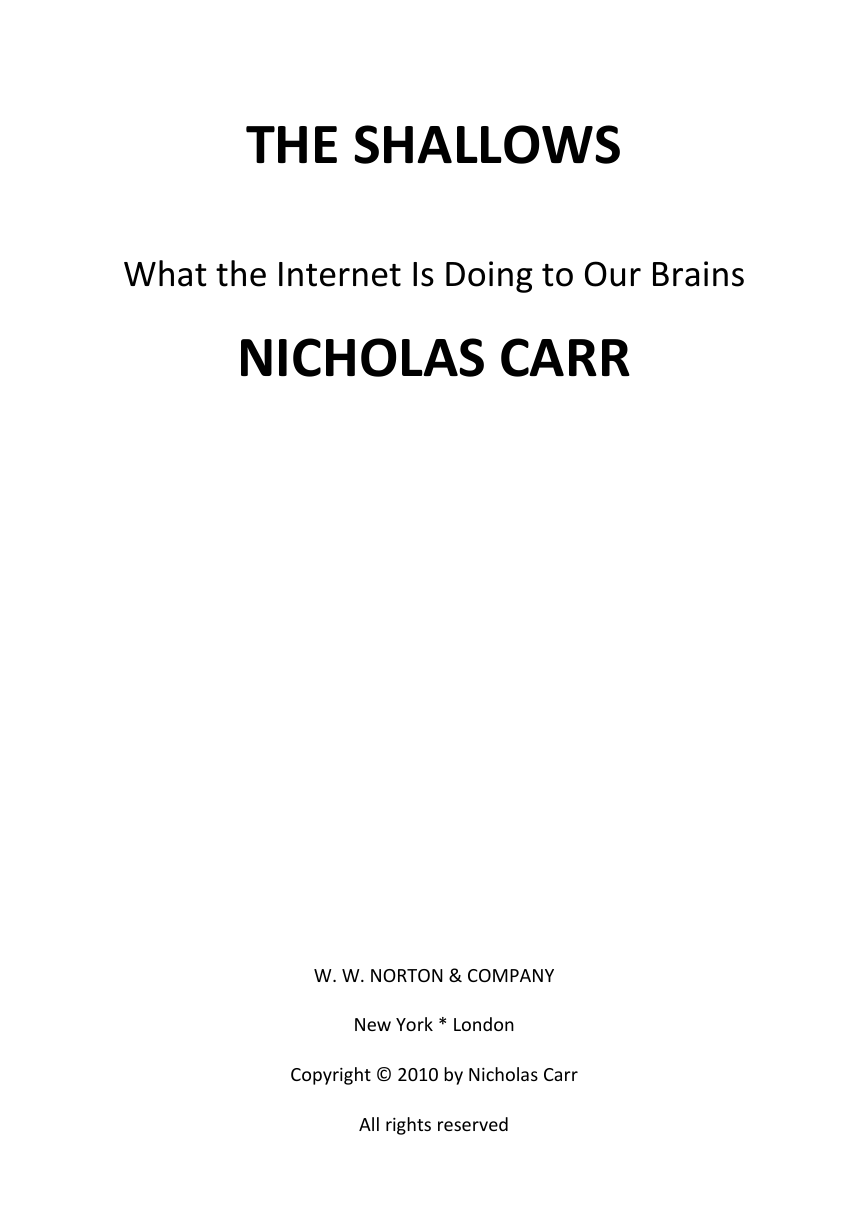
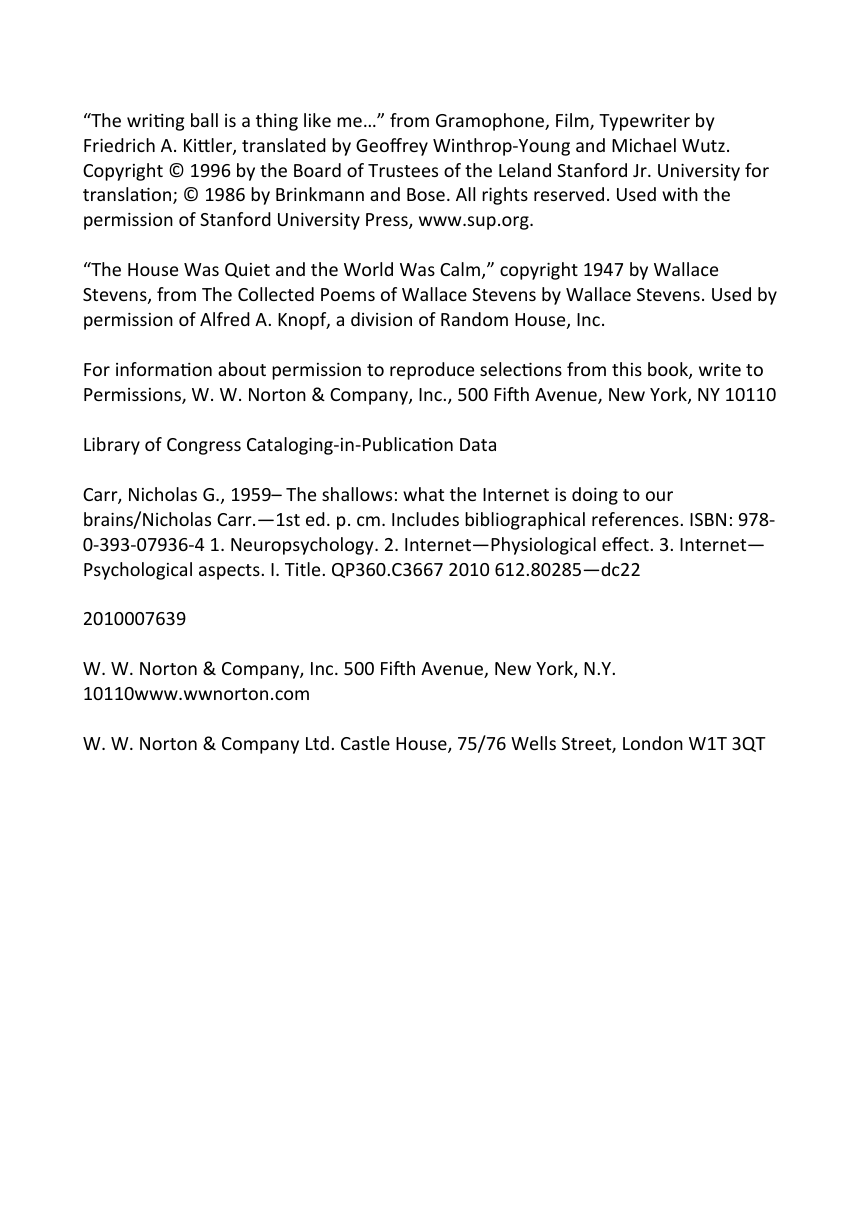

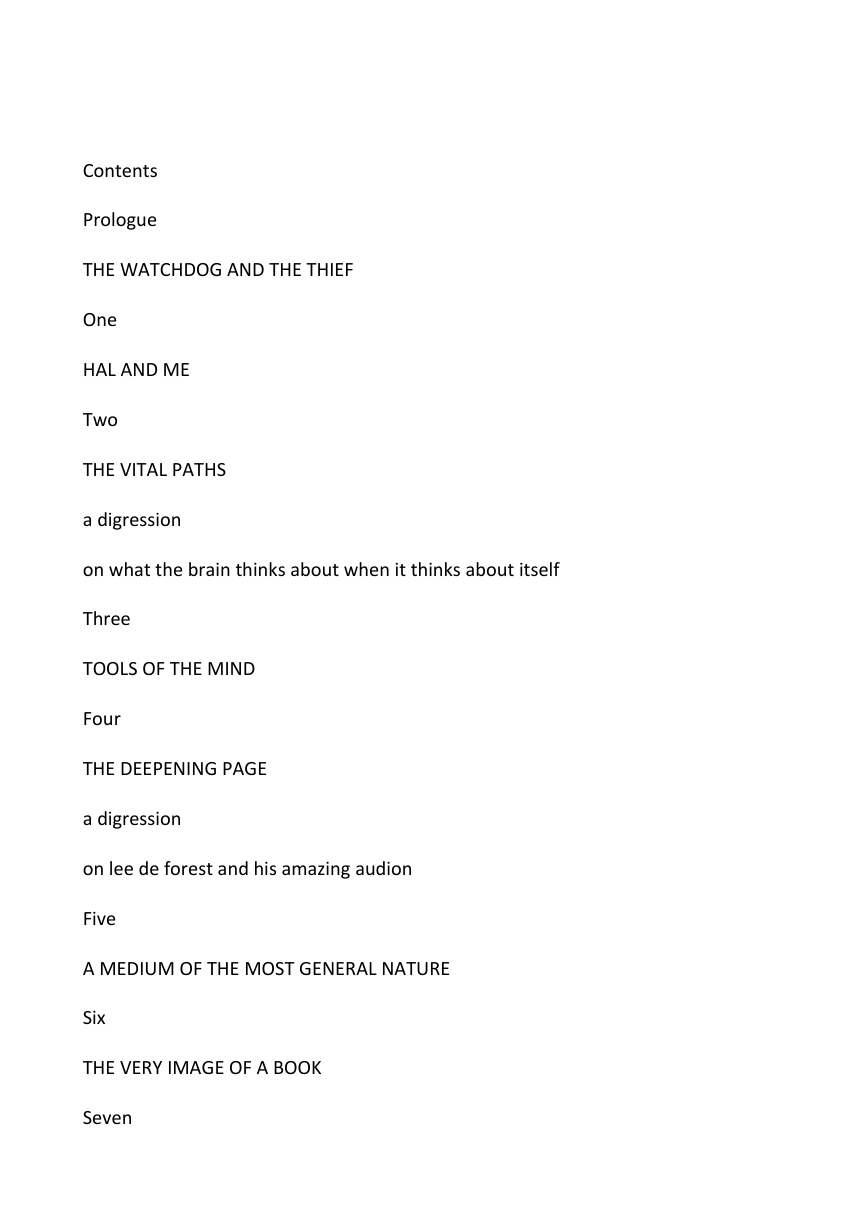
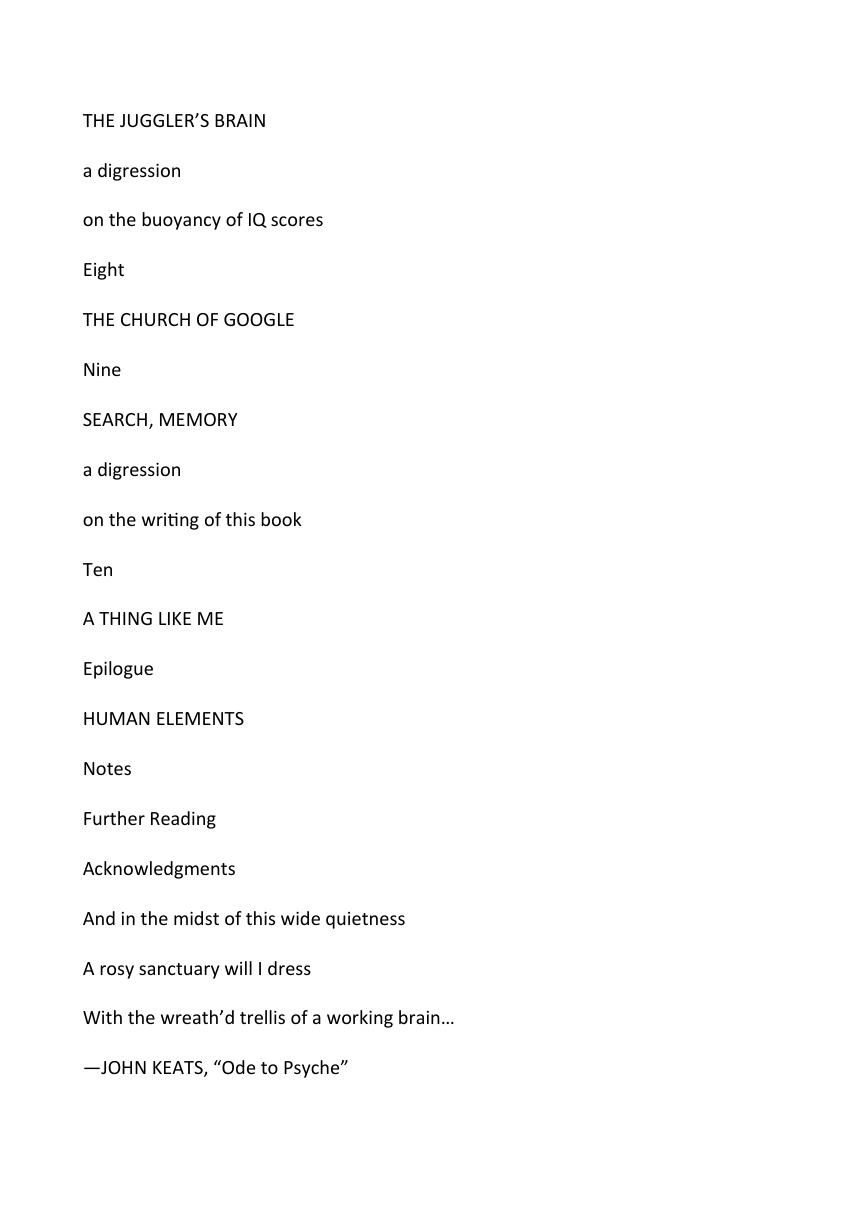
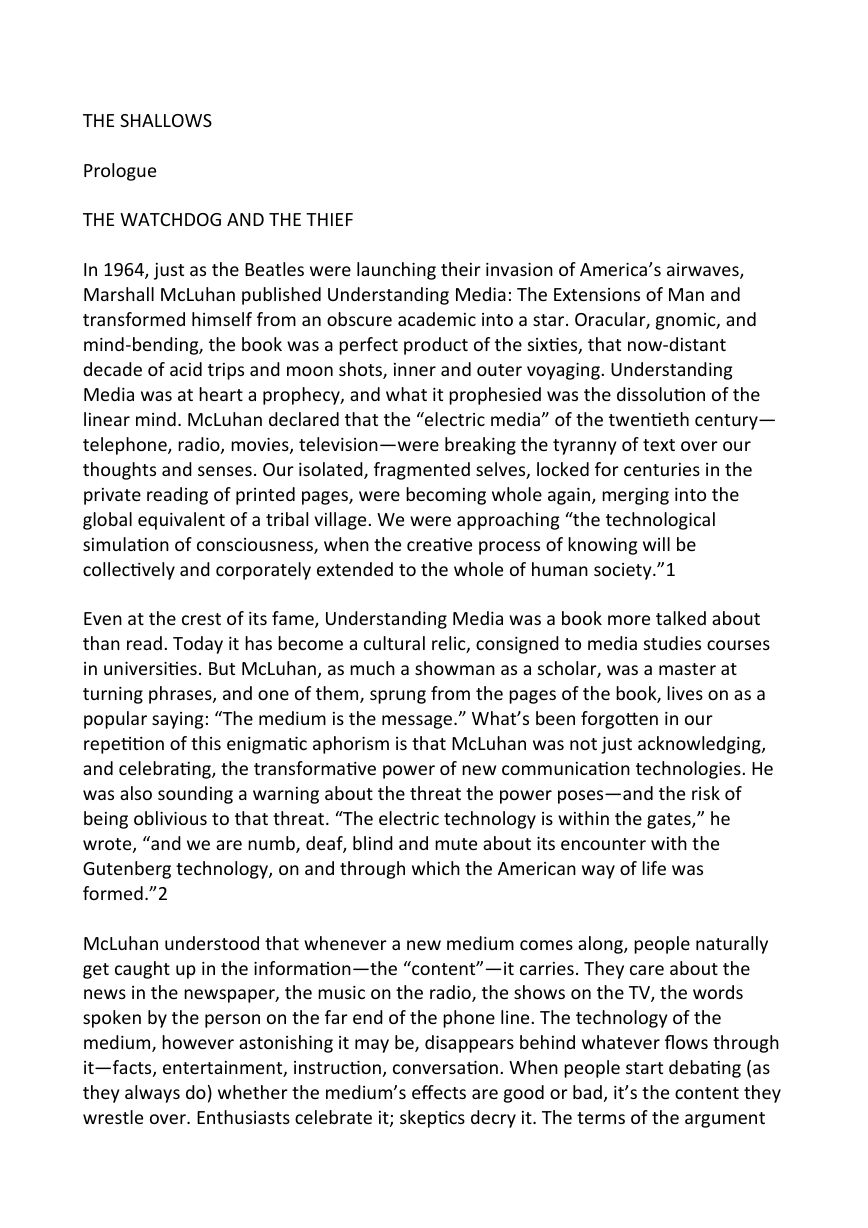








 2023年江西萍乡中考道德与法治真题及答案.doc
2023年江西萍乡中考道德与法治真题及答案.doc 2012年重庆南川中考生物真题及答案.doc
2012年重庆南川中考生物真题及答案.doc 2013年江西师范大学地理学综合及文艺理论基础考研真题.doc
2013年江西师范大学地理学综合及文艺理论基础考研真题.doc 2020年四川甘孜小升初语文真题及答案I卷.doc
2020年四川甘孜小升初语文真题及答案I卷.doc 2020年注册岩土工程师专业基础考试真题及答案.doc
2020年注册岩土工程师专业基础考试真题及答案.doc 2023-2024学年福建省厦门市九年级上学期数学月考试题及答案.doc
2023-2024学年福建省厦门市九年级上学期数学月考试题及答案.doc 2021-2022学年辽宁省沈阳市大东区九年级上学期语文期末试题及答案.doc
2021-2022学年辽宁省沈阳市大东区九年级上学期语文期末试题及答案.doc 2022-2023学年北京东城区初三第一学期物理期末试卷及答案.doc
2022-2023学年北京东城区初三第一学期物理期末试卷及答案.doc 2018上半年江西教师资格初中地理学科知识与教学能力真题及答案.doc
2018上半年江西教师资格初中地理学科知识与教学能力真题及答案.doc 2012年河北国家公务员申论考试真题及答案-省级.doc
2012年河北国家公务员申论考试真题及答案-省级.doc 2020-2021学年江苏省扬州市江都区邵樊片九年级上学期数学第一次质量检测试题及答案.doc
2020-2021学年江苏省扬州市江都区邵樊片九年级上学期数学第一次质量检测试题及答案.doc 2022下半年黑龙江教师资格证中学综合素质真题及答案.doc
2022下半年黑龙江教师资格证中学综合素质真题及答案.doc